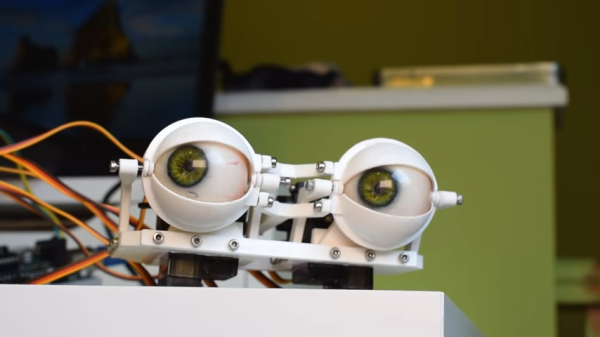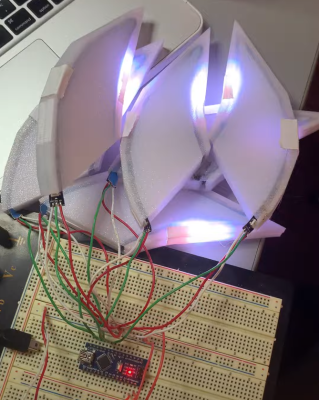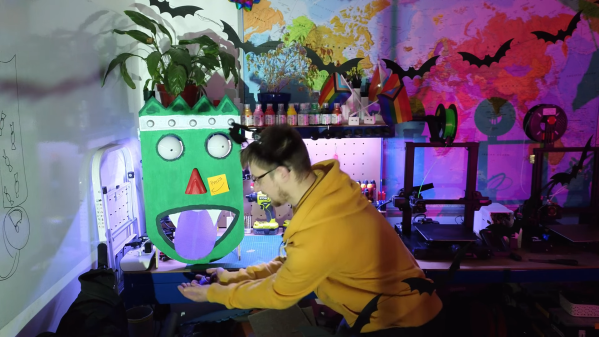It’s not Halloween yet, but if you’re planning a technically-complicated costume, it might serve you well to start building now. To that end, here’s a guide from [Ikkalebob] on how to produce a compact animatronic eye mechanism.
The eye is inspired by mechanisms used in professional animatronics. However, that doesn’t mean it’s hard to build. Complex machining is done away with in favor of readily reproducible 3D-printed components. The eyes are able to look in different directions and can move realistically, and the build includes working eyelids that have a great blinking action to them that feels very natural. An Arduino Uno is charged with running the eyes, paired with a bunch of hobby servos and an Adafruit PCA9685 servo driver. A hefty 5V, 4 amp power supply is on hand to deliver enough juice so the servos move smoothly without stuttering.
It’s the kind of thing that’s perfect for your spooky familiar, or installing eyes in the back of your head. It would be perfect to hide behind a window or in the bushes, too. Video after the break.
Continue reading “Realistic Animatronic Eyes Are An Easy DIY Build”


















